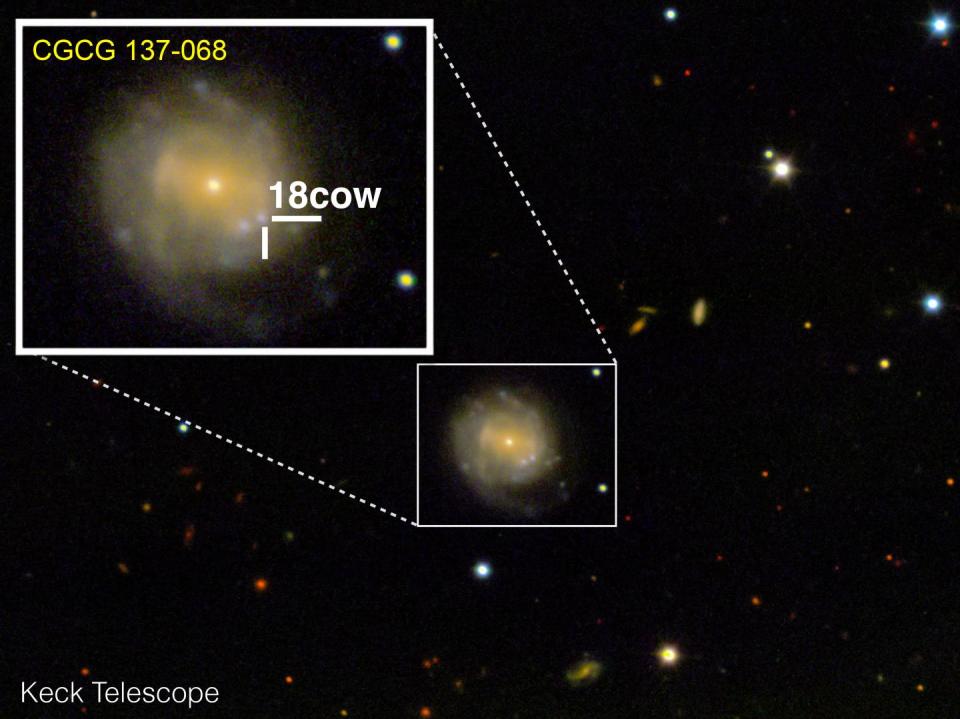Extremely flat explosion dubbed 'the Cow' defies explanation

A weird cosmic explosion that stunned scientists in 2018 just got even stranger. A new analysis of the polarized light from the first recorded fast blue optical transient (FBOT) explosion — officially known as AT2018cow and nicknamed "the Cow" — revealed that the blast is the most asymmetrical explosion ever seen by astronomers, bursting into space in a flattened, pancake-like shape rather than a typical sphere.
The shape of the blast, which is around the size of the solar system and occurred 180 million light-years from Earth, may challenge scientists' perceptions of how explosive events like FBOTs occur.
"This discovery tells us that these explosions aren't spherically symmetric — in fact, the disk we think we've observed is really flat," Justyn Maund, a senior lecturer in astrophysics at the University of Sheffield in the U.K. and lead author of the new research, told Live Science via email. "This means that any model that wants to explain these FBOTs has to confront the fact that these are not round events."
FBOTs like the Cow were already a major puzzle for scientists. Since the discovery of the Cow in 2018, only four other similar transients have been sighted, and as a result, very little is known about FBOTs or what causes them. But one thing is clear: They don't behave like typical supernovas, the most common type of space explosion, which occur when massive stars run out of nuclear fuel and collapse under their own gravity.
"FBOTs are bright, they're really bright — brighter than some superluminous supernovae — but they suddenly appear, and then their brightness drops like a stone!” Maund said. "Unlike regular supernovae, there are no radioactive elements to power the brightness, so the power has to come from somewhere else."

In their new research, Maund and his team took another look at the light from the Cow first recorded in June 2018, this time studying how the light was polarized — how the vibrations in the light waves traveled in a single plane. While this analysis of the Cow doesn't reveal the origins of FBOTs just yet, the Cow's flatness shows that FBOTs are even more distinct from supernovas than scientists previously thought.
Related: Brightest gamma-ray burst ever detected defies explanation

 Yahoo Autos
Yahoo Autos 